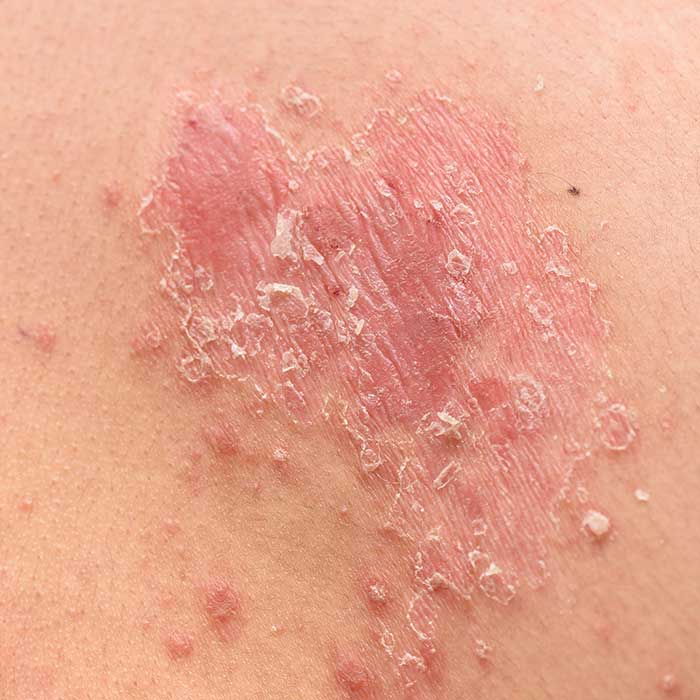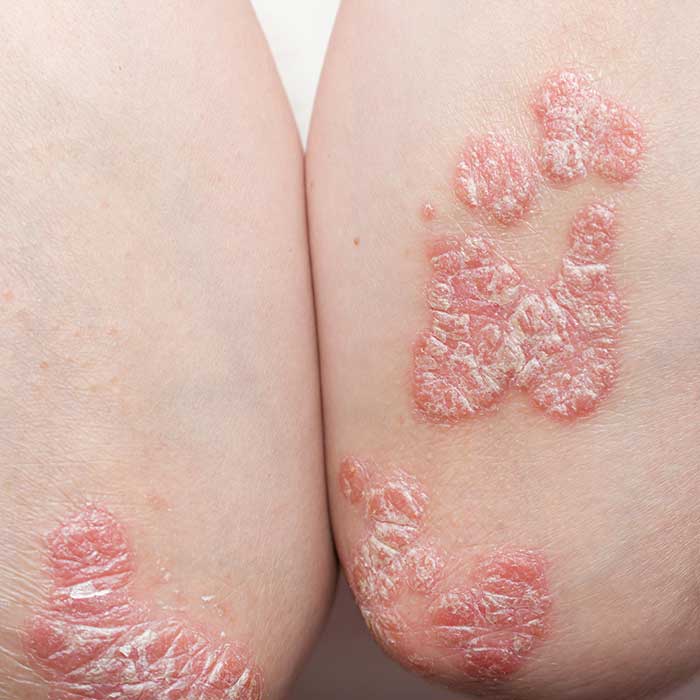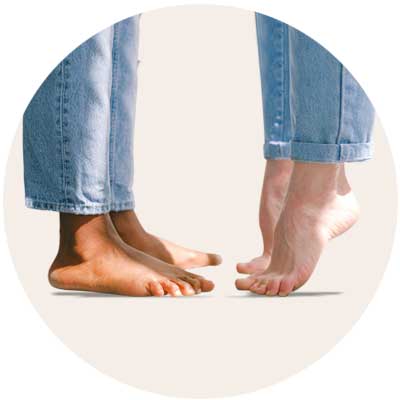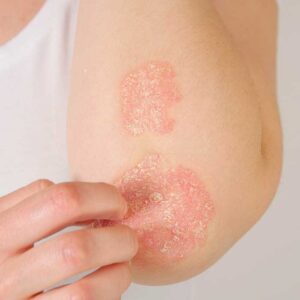What is Psoriasis?
Psoriasis falls into the very complex and unpredictable category of skin diseases. It can occur in various parts of the body at any age.
It is a growth disorder of the epidermis whereby thickened, often inflamed and itchy patches of skin form. In some cases it involves visible areas such as the face, hands, and scalp, causing significant psychological discomfort.
How does psoriasis form and where can it appear?
The most frequently affected areas are the scalp, hands, elbows, knees and the base of the spine. Psoriasis can also affect the feet and nails. There are several different types of psoriasis:
- small, clustered psoriasis plaques
- guttate psoriasis (small, scattered plaques)
- single plaque psoriasis
- large plaque psoriasis
What are the symptoms of psoriasis?
- Hyperkeratosis (thickening of the stratum corneum)
- Redness and itching
- Fissures due to the stiffness of hyperkeratotic skin
- Scaling
What are the causes of psoriasis?
Is it possible to attribute a single cause to the onset of psoriasis? the answer is no. Often, certain people are simply more predisposed than others to develop forms of psoriasis. However, trauma, infection, stress and specific treatments for other health issues can also trigger the condition.
How to treat psoriasis
Treatment is determined by the type, severity and location of the psoriasis. For severe or widespread psoriasis, biological treatments are used to specifically block factors of inflammation. Medium to mild psoriasis, with fewer affected areas, can be managed with topical treatments or through phototherapy.
Treatment with natural reducents
The most correct topical treatment is with natural reducents, that are active, non-pharmaceutical ingredients that can reduce plaque. Sulfur, salicylic acid, ichthyol sulfonate, and mineral tar (coal tar) are considered natural reducents. These are not permitted as exclusive treatments under EU law, unlike in the USA and Canada.
To soothe skin manifestations such as redness, itching and thickening of the body
- Apply 2S Cream to the affected areas of the body with plenty of massage in the evening.
- In the morning, cleanse with Eudermic Cleansing Base.
- Apply PEG Balm in the morning to the affected areas with plenty of massage.

















